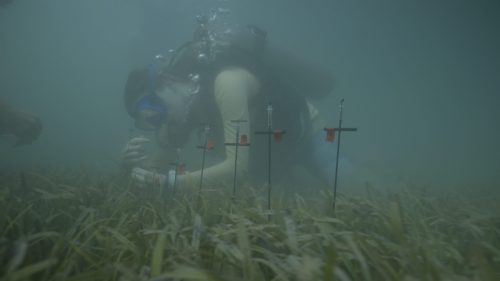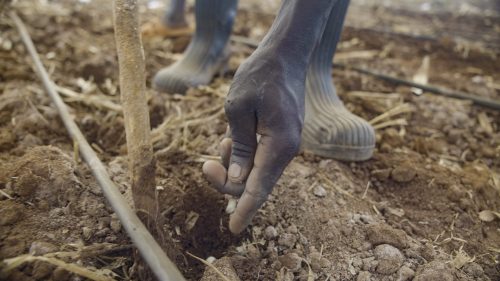
Slated for launch in 2025, Oceanbird will be equipped with hard sails that function like upright aircraft wings and tower over 100 meters high. The sailing cargo vessel is featured in Wondrium’s “Solving for Zero.” (Photo Courtesy Wondrium.)
Last year, Bill Gates released the book, “How to Avoid a Climate Disaster,” and outlined how to combat climate change and get to net-zero emissions of greenhouse gases. In the best-selling book (rated 4/5 stars by over 33,000 on GoodReads), he details the practical transformation necessary to reverse the effects of decades of catastrophic practices.
The book is coming to life ahead of Earth Day in an original documentary and 10-part companion education series on Wondrium, the “leading streaming provider of lifelong learning content,” which is based in Chantilly, Va.
Kevin Barnill, whose career spanned National Geographic, Discovery and Animal Planet, oversaw Wondrium programming here in the DMV and spoke to us about telling the story of trying to reach net-zero by 2050. >>
WHAT NEW FACT WAS MOST STRIKING TO YOU IN MAKING “SOLVING FOR ZERO”?
That we are much closer to big breakthroughs than we might have realized. Being around all these innovators has me excited and optimistic for the future. Global cement production accounts for 10 percent of all carbon emissions, over 5 billion tons per year. If we compared that to all the emissions from individual countries, that would be the third largest country in the world! One of our innovators is currently producing cement which lowers the emissions by almost half! They think that over time, they can reduce it to almost zero. Overall, the biggest thing I learned is that it isn’t any one solution. It’s going to be a lot of things all rolled together.
WHAT DO YOU HOPE VIEWERS WILL LEARN BY WATCHING?
That there is hope. I grew up learning that certain technologies we have are “bad” and we need to stop doing [those] and do more of the “good” ones. That’s true, but it’s not that simple. Developing countries must rely on fossil fuels currently to evolve their economies. So, we need to develop solutions that are cheaper and provide the same service. Otherwise, we can’t adopt everywhere we need to. It’s a global problem. After working on this project for over a year and collaborating with top scientists, I am optimistic that we will be able to solve the problem of climate change. I hope people that watch feel that way, too.
When “How to Avoid a Climate Disaster” was about to be published Gates has been a long-time fan of Wondrium and asked if we had any ideas of how we might align a course or video project with the book. Naturally, we jumped at the chance and started developing the concepts that became “Solving for Zero.”

Scientists from Project Vesta monitor conditions on the ocean floor off the coast of theDominican Republic, where they hope to deploy a mineral called olivine to draw CO2 out of the atmosphere. (Photo courtesy Wondrium.)
HOW IS THIS SHOW DIFFERENT FROM OTHER ENVIRONMENTAL DOCUMENTARIES?
There is a lot of content out there that examines the problem of climate change. Our project is about the innovation that is going on to solve it.
HOW DO YOU THINK FANS OF THE BOOK WILL REACT TO THE SHOW? I think they will appreciate the depth we’ve added to all the great content. We’ve added a lot of expert voices and spent a lot of time breaking down some of the big challenges it posed. I’m a visual person, obviously. The book has charts and graphs and things like that, but there is nothing like being able to “see” the content come to life the way you can in film or television. I hope it’s familiar, but they learn something new. When you are dealing with a film or a book that’s based on recent scientific research, things develop quickly. It’s inspiring how far we’ve come in a year, and I hope the momentum continues.

CIMMYT is breeding new varieties of maize that are resistant to the heat, droughts, and diseases that climate change has already brought to Africa and other parts of the world. (Photos courtesy Wondrium)




